Chapter 4: My workplace
In this chapter you will ….
Learn about different crew roles and duties
Learn the most common elements that make up an engine room
Learn words and phrases related to marine propulsion
Learn about troubleshooting and maintenance
Your sailing experience has given you the opportunity to participate in different types of work on board- from engine maintenance and repair to daily rounds and pollution prevention procedures.
This chapter will focus on the officers' duties in the engine room and the different roles of the engine room watch as well as the equipment used. After working with this chapter, you should be able to describe the roles and duties of a marine engineer. Good seamanship and the importance of accurate communication in English are emphasized throughout the chapter.
Manning
The ISM Code states that "each ship is manned with qualified, certificated and medically fit seafarers in accordance with national and international requirements" (ISM CODE, § 6.2). It is the shipping company's responsibility to ensure that all crewmembers in the company's fleet meet the requirements.
You can read more about the safe manning of vessels in SOLAS Chapter V § 14, or read the regulation Manning on Norwegian ships here. The British Maritime & Coastguard Agency's guide on safe manning is found here.
The Crew
Manning
How a vessel is manned is critical to its successful operation. The safe operation of a ship is just as dependent on the competence and actions of the crew as it is on the physical state of the ship.
When out at sea, it is crucial that the crew's combined competence covers everything from starting up a cold ship and routine maintenance on auxiliary engines to treating crewmembers that have been injured and, in such an event, even fighting fires.
Crew roles and key responsibilities
The crew is divided in different departments, each with an officer that reports to the captain. Below, you see an example of the ranking on board a somewhat larger vessel:
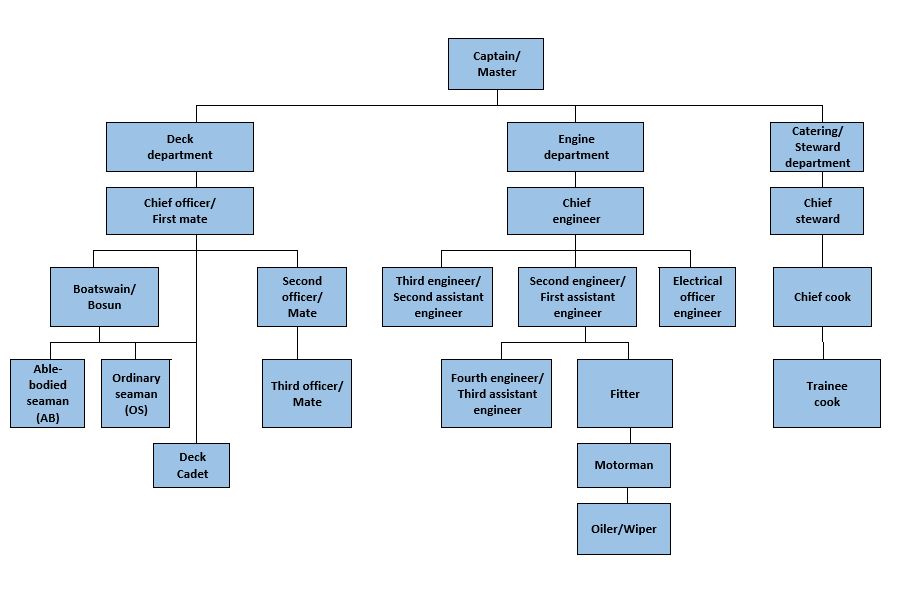
The size of the departments and the number of management levels on board a vessel is dependent on the ship's type, size and cargo. A large cruise ship will have larger departments, maybe even a hotel department with a staff Captain who has a designated responsibility for the crew, which can be quite large on such a vessel. On the other hand, a small fishing vessel has less of a difference between those in leadership roles and the rest of the crew, where all hands take part in the deck work, even the Captain, which would be unthinkable on a larger vessel.
Technical English for Deck Cadets (Seagull AS, 2011) explains the responsibilities and duties of the officers and ratings on board.
Master
The Master of the ship, or the Captain, is in command of the ship. She has the overall responsibility for the safe navigation of the ship, the safety and protection of the crew and passengers, the safe delivery of the cargo, and the efficient maintenance of the ship's equipment. She ensures discipline and smooth operations on the ship by delegating responsibility to qualified officers and members of the crew and by monitoring their performance.
Chief Officer
The Chief Officer is in charge of the deck and cabin departments. He is responsible for loading, discharging and care of the cargo in port and at sea; the general maintenance of the deck and accommodation areas; and maintaining the navigation and safety equipment. He also assists the Master in the general administration on the ship. While at sea the Chief Officer normally keeps the 4-8 morning and evening navigation watch.
Second Officer
The Second Officer is often called the Navigating Officer and is responsible for the upkeep of navigational charts, navigational equipment and publications. He plans the voyage under the guidance of the Master and plots the course on the chart before the ship sails. At sea he keeps the navigational watch from 12-4 morning and night. In port he keeps alternate cargo watch to assist the Chief Officer in cargo operations.
Third Officer
The Third Officer is responsible for the maintenance of the ship's safety equipment, including the fire- fighting and the life-saving equipment, under the guidance of the Chief Officer. He keeps the 8-12 mornings and evening navigational watch at sea. In port he keeps the cargo watch, alternating with the Second Officer to ensure smooth cargo operations.
Deck Cadet
The trainee or Deck Cadet works under the guidance and command of the Chief Officer. All ships have a specialized training program and work schedule for hands-on job experience for the cadets.
Bosun
The Bosun, or Boatswain, is in charge of the Deck Ratings or crew. The Bosun takes orders from the Chief Officer for the maintenance work on deck and allocates work to the Deck Ratings.
Chief Engineer
The Chief Engineer is the Head of the Engine Department. She has the overall responsibility for the maintenance and smooth operation of all machinery including the engine room and deck machinery, electrical and electronics systems, mooring equipment, deck pumps and cranes. She is also responsible for the ordering and storing of spares and stores required for the upkeep of the machinery.
The Chief Engineer estimates the fuel oil consumption of the main engine during the voyage and ensures sufficient 'bunker' or fuel oil is available for the forthcoming voyage.
Second Engineer
The Second Engineer is in charge of engine room machinery and personnel and assists the Chief Engineer in the maintenance of all machinery in the engine room and critical machinery on deck. He delegates various jobs to the Engineers and Engine Ratings and monitors their performance. He keeps the 4-8 morning and evening Engine Room watch in a manned ship and Day work (8 - 17) in an Unmanned Machinery Space (UMS) ship along with other engineers.
Third Engineer
The Third Engineer is responsible for auxiliary engines and other electrical equipment. He also keeps the Engine Room Watch from 12-4 morning and night and assists in the general maintenance of the Engine Room.
Fourth Engineer
The Fourth Engineer is responsible for auxiliary machinery such as purifiers, pumps and related equipment. He is responsible for daily bunker calculations. He usually keeps the 8-12 morning and evening Engine Room Watch
Electrical Officer
The Electrical Officer is responsible for the maintenance of electrical equipment onboard the ship, including radio, navigation and safety equipment.
Fitter
The Fitter assists in the general maintenance of the Engine Room. The various repair jobs including welding and gas work are usually carried out by the Fitter.
Engine Ratings
Engine Ratings assist in general maintenance and cleaning and contribute to smooth operations in the Engine Room.
Catering Department
On cargo ships, the Chief Cook and the Stewards form part of a Catering Department team with the responsibility for food preparation and service and general accommodation area cleanliness. They work under the guidance of the Master. On Passenger Ships the Catering Department will have more personnel to meet the requirements of the passengers.
The bigger the vessel and the more complex the work on board, the more need we have for written procedures specifying the work and responsibilities on board. In 2017, the Norwegian Maritime Authority laid down new regulations on safety management also for small cargo ships, fishing vessels and passenger ships. You can read the regulation here.
Exercises
-
Train yourself in the ThingLink found here.
-
Describe the ranking of the crew and the different responsibilities on the ship you last worked on.
a) Set up a diagram showing the different ranks and ratings on board. Pay attention to what the Norwegian ranks of overstyrmann and førstestyrmann are in English. Make sure you know the right pronunciation and the correct English-Norwegian translation.
b) Describe the hierarchy and the roles of the different crewmembers to a partner by using the diagram
c) Read the following text from Mareng: The crew and its task from Unit 9 On the watch. Write a short summary, where you, in keywords, list the different tasks of the different ranks. Add also other things you might find important. Tips: You can download entire Unit 9 here. -
Crew Bingo
Teacher tip: Here the students are to each randomly receive a rank or rating title. They are not to show which rank or rating they have received to anyone else. Using their prior knowledge and what they have just read/learned about ranks and ratings, each student should come up with a description of that particular rank or rating; this can be who this rank/rating would typically answer to on board a vessel or the responsibilities and duties most commonly associated with the rank they have received. After they have come up with their description, the students should canvass the classroom sharing their descriptions with each other and filling in the names of their classmates in the appropriate squares on their "bingo sheets" (see the link below). In order to get a "Bingo" on their "Bingo Sheet", students must write the names of their classmates next to the appropriate rank or rating based on the descriptions they have heard. The person who is able to fill in their "Bingo Sheet" correctly and completely first is the winner. Here's the bingo sheet.
Shift work and watch schedules
The most common shift schedules or rotations for the Norwegian seafarer are 2:2 or 4:4, two weeks on and two off, or four weeks on and four weeks off, but this can differ from company to company, the size of the vessel and whether the work is season based or not.
In order to maintain continuous operation of a vessel, the crew is divided into watches. In a three-watch system, the crew is divided into three groups, and the workday divided into six watches, each four hours long, as you can see here:
| First watch | 2000-2400 |
| Middle watch | 0000-0400 |
| Morning watch | 0400-0800 |
| Forenoon watch | 0800-1200 |
| Afternoon watch | 1200-1600 |
| Evening watch | 1600-2000 |
In some cases, the watch from 1600-2000 is split in two to facilitate feeding the entire crew a larger meal over a short period of time. These two short watches are sometimes referred to as the first and second dogwatch. When translating the term dogwatch to Norwegian directly we get "hundevakta" which in Norwegian refers to the watch between 0000-0400 not to be confused with the English dogwatch.
Exercise
Set up a table with the shift and watch schedule you were part of last. Reflect on the possible advantages and disadvantages with this arrangement.
The Engine Room Watch and Engine Room Team Management
Click here to read about some of the general responsibilities an engineer has for the main propulsion system during an engine room watch.
Pairwork
With a partner, come up with a specific example for each point on the list. Have you done any of these yourself? Describe your experience.
TIP
Did you understand all the words used in the list of engineer responsibilities? What do you when you find a word you do
not know? A good way to increase your vocabulary and improve your English is to create a list of words that you can add to
continuously. You can write down the English word first, then the Norwegian translation, and then use it in a sentence.
Example:
Apparatus- apparat
An apparatus is a general term for a piece of technical equipment or machinery.
Handing over the watch to the next engineer is an important task that all marine engineers must do. The successful handing over of that watch is dependent, like many things on board a ship, on clear communication. These means that both the engineer handing over the watch and the engineer going on watch must both speak clearly and unambiguously as well as understand the information they have just received. In addition to this, any engineer carrying out an engine room watch should be aware of both the standing orders of the chief engineer on board.
Besides the standing orders , some of the information that the relieving engineer should receive includes
- Any special orders regarding ship operation, systems, or maintenance.
- Tank levels that indicate special attention is needed.
- The condition of fire extinguishing equipment and systems.
- Any changes in operation mode due to emergency operation or changed or dangerous sea states.
- Details about any maintenance or repair work currently being done in the engine room.
- Details about damaged or inoperable machinery or equipment.
- Checklist details for the engine room before leaving port or entering port.
- Details about the condition and operation of main and auxiliary engines.
- Details about machinery or equipment that is under manual monitoring.
- Details about all auxiliary machinery.
Another important task all marine engineers must perform is keeping track of the engine room logbook. Click here to look at an example page of the logbook. Can you think of any reasons why entering correct information into the logbook is so important?
Pairwork
Practice the following SMCP with a partner .
B1/1.13 Handing and taking over the watch / conn
The Chief Engineer or an (engineer) officer handing over the watch should say:
1. You have the watch now.
The relieving officer should confirm and say:
1.1 I have the watch now .
The Chief Engineer when called to the engine (control) room and formally taking over the watch, should confirm and say:
2 I have the watch now.
The officer of the watch should confirm and say:
2.1 You have the watch now
The Engine Room
The engine room and those who work in it provide the vessel on which they are sailing with the necessary power to travel from port to port. Your experience and training have taught you that engine rooms can vary in size, machinery, and equipment. However, the majority of engine rooms share many common features and procedures.
The layout and design of an engine room are dependent on many factors. Type of vessel, operational features of certain equipment, and accessibility all play a role in the construction of an engine room. It is also important to keep in mind that the ship’s engine room can often be several rooms depending on the individual ship’s layout. These rooms can also be split into levels in order to accommodate all the necessary machinery and systems.
Watch
Watch this video of a tour of a ship’s engine room.
Watch this 360 degree video of Maersk Inventor’s engine room. Note down the names of the different machinery and equipment you see.
Thanks to your education, training, and experience, you should be familiar with much of the following information.
What can be found in the engine room?
The engine room is home to many important onboard components.
Not only does it house the ship’s engine or engines, it is also the control center for many important systems and machinery. Inside the engine room of a ship equipped with a diesel engine:
- Engine
- Auxiliary machinery
- Main air compressor
- Auxiliary / topping air compressor
- Emergency air compressor
- Control air compressor
- Dehumidifier
- Fresh water generator
- Auxiliary air blower for main engine
- Auxiliary generators / alternators
- Heavy oil purifier
- Diesel oil purifier
- Lube oil purifier
- Oil water separator
- Exhaust boiler
- Incinerator
- Sewage plant
- Fresh water hydrophore
- sanitary hydrophore
- Engine room overhead crane
- Auxiliary steam condenser
- Generators
- Inert gas plant
- Fresh water generator
- Heaters
- Purifier steam heater
- Main engine fuel oil heater
- Coolers
- Jacket cooling water cooler
- Main lube oil cooler
- Fresh water generator cooler
- Pumps
- Main engine booster pump
- Boiler feed pump
- Fresh water condenser pump
- Maine engine fuel pumps
- Main sea water pumps
- Auxiliary sea water pumps
- Main ballast pump
- Heavy oil transfer pump
- Diesel oil transfer pump
- Lube oil transfer pump
- Main engine lube oil pump
- Bilge pump
- Sludge pump
- Air conditioner condenser pumps
- Fridge pump
- Fire and general service pump
- Fresh water generator ejector pumps
- Piston cooling water pump
- Jacket cooling water pump
- Sanitary hydrophore pump
- Fresh water hydrophore pump
- Sludge discharge pump
- Tanks
- Fuel oil drain tank
- Sludge drain tank
- Lube oil drain tank
- Lube oil renovating tank
- Scavenger drain tank
- Stuffing oil drain tank
- Piston cooling water tank
- Bilge holding tank
- Bilge holding tank
- Main engine crank case lube oil tank
- Hot well / cascade tank
- Diesel oil settling tank
- Diesel oil service tank
- Heavy oil settling tank
- Heavy oil service tank
- Mixing column
- Cylinder lube oil storage tank
- Jacket cooling water expansion tank
- Cofferdams
- Engine control room
- Waste incinerator
- Electrical panels
- Manuel handling gear
- Bilge wells and piping
- Aft bilge well
- Port side bilge well
- Starboard bilge well
- Central bilge well
- Cargo bilge well
- Vents
- Valves
- Air bottles
- Fire –fighting arrangement
- Boilers
- Spare parts
Systems and arrangements
All of the above components contribute to the overall functionality of the ship. Many of them belong to a specific system, working together to keep the ship operational. Onboard systems include:
- Fuel system
- Cooling system
- Lubrication system
- Starting air system and combustion air
- Exhaust gas system
- Shafting, gear boxes and couplings
- Electrical system
- Ballast system and bilge line arrangement
- Fire-fighting arrangement
Which systems?
Which systems must include environmental protection equipment? What is the name of the convention that regulates these? Write down what you already know and then find out more by visiting IMO’s website.
Exercise
- How many of the above terms are you familiar with? Pick at least five of the above terms and discuss their function in an engine room with a partner.
- Write a description of the last engine room you worked in using as many of the above terms as you can.
Marine Propulsion
Marine propulsion is dependent on three key components: an energy source, a machine that turns that energy into power, and a propulsor that utilizes that energy to move. While the first ships to sail the seas relied on the strength of those on board to row or wind to help them travel, the modernization and mechanization of ship’s propulsion has made life easier for today’s seafarers. Steam engines were the first mechanical advancement in marine propulsion. The first vessels to employ the steam engine used paddle wheels to drive them forward in the water, and it was not until 1839 that the idea of a propeller as we know it today, based on Archimedes’ helical screw, was used. There have been countless advancements in the field of propulsion that have helped create the modern system with which most engineers are currently familiar.
Oother types of marine propulsion
This section focuses primarily on the diesel engine, but other types of marine propulsion include
- Wind propulsion
- Nuclear propulsion
- Gas turbine propulsion
- Fuel cell propulsion
- Biodiesel fuel propulsion
- Solar propulsion
- Steam turbine propulsion
- Diesel electric propulsion
- Water-jet propulsion
- Gas fuel or tri-fuel propulsion
Propellers
The kind of propeller installed a ship depends on a variety of factors, such as vessel size and purpose, and economic factors. A propeller’s job is to turn the force created by the engine into propulsive force, forcing the ship into movement. Click on the links below to find out more about four different kinds of propeller solutions used on vessels today.
Interactive pics + info
Commonly used propellers
Fixed pitch propeller (FPP)
Controllable pitch propeller (CPP )
Contra-rotating propeller (CRP)
Adjustable bolted propeller
Adjustable bolted propeller
Waterjet
Engines
Engines are machines that turn an energy source, such as fuel, into physical energy. In the case of marine propulsion, an engine provides the power necessary for rotating the propeller. The majority of modern commercial vessels are equipped with diesel engines. Other engine types and propulsion systems can be used, and developers in this field are constantly exploring and researching alternatives to better suit the needs of a changing shipping industry. The kind of engine and propulsion system is often dependent on fuel type, and nuclear propulsion, gas turbine, biodiesel, fuel cell propulsion and solar power are other methods used on board vessels today.
Marine diesel engines are internal combustion engines that are either two-stroke or four-stroke. Simply put, internal combustion refers to the process of ignition caused by the combination of fuel, in this case diesel, and an oxidizing agent, most commonly air. The process, seen below, is repeated many times in order to maintain propulsion.
Take a look at this SWAY to learn more about the cycles of the two-stroke and four-stroke internal combustion engines.
The combustion process in a two-stroke diesel engine.
| Four-stroke Marine Engine | Two-stroke Marine Engine |
|---|---|
| ➢ Intake: Air enters the cylinder through the air inlet valve as the piston moves down. | ➢ Exhaust and intake: Air enters the cylinder through the intake ports, pushing out the remaining exhaust through valves at the top of the cylinder. |
| ➢ Compression/Combustion: The inlet valve closes, and the piston moves up, compressing the air mixture. The air becomes a hot gas and fuel is injected through the fuel injection valve. The gas ignites. | ➢ Compression/Combustion: The piston moves up, compressing the air and causing it to heat. The fuel injection valve injects fuel, and the fuel and heated air mixture combust. |
| ➢ Power: The combustion of the fuel and gas mixture pushes the piston down which in turn pushes the crankshaft. | ➢ Power: The ignition of the fuel and air push the piston down, causing the crankshaft to rotate. |
| ➢ Exhaust: As the piston moves back up, it pushes the remaining exhaust gases out through the exhaust valve. |
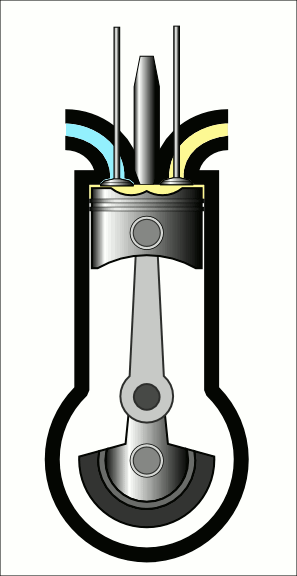
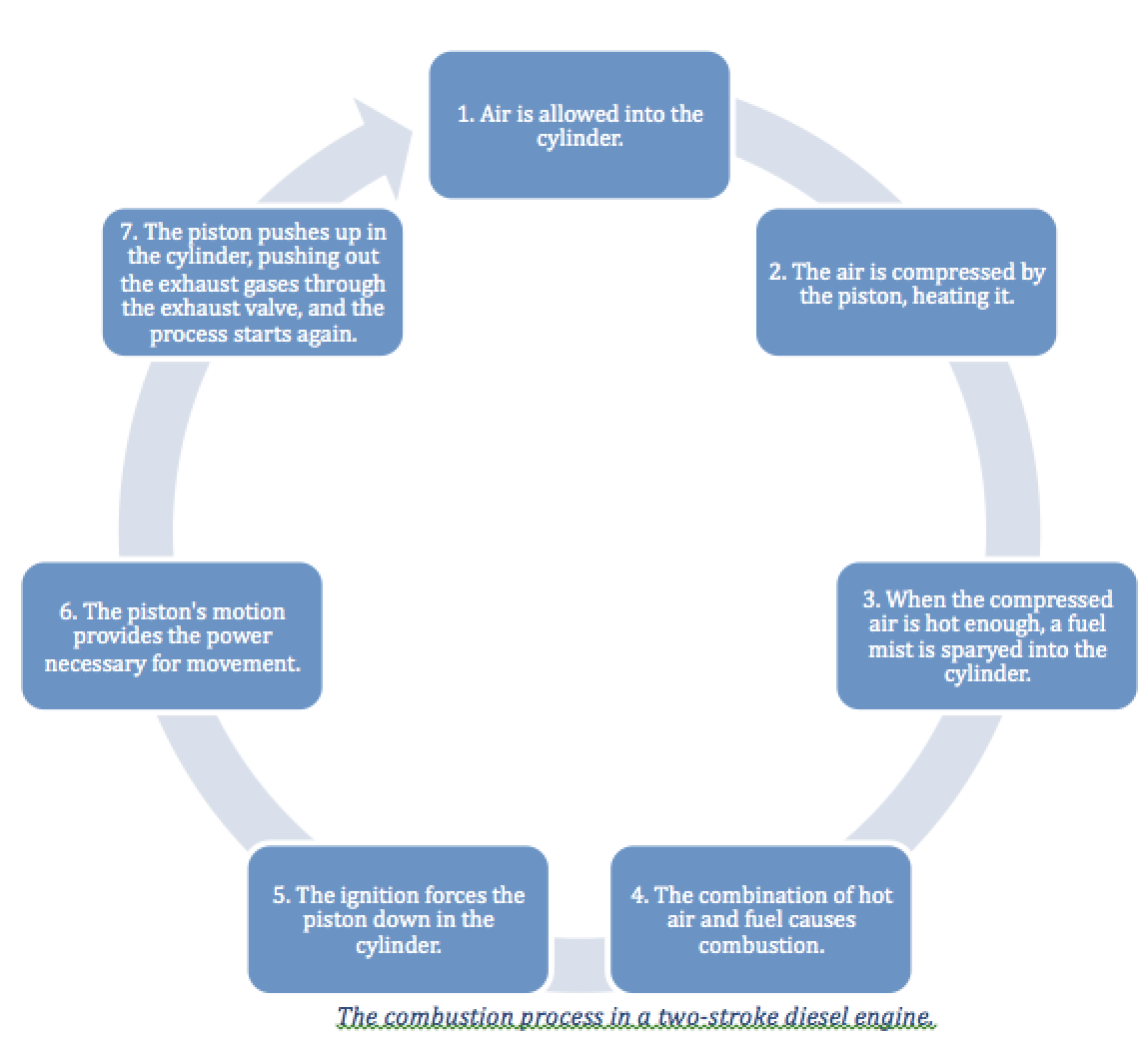
Two-stroke engines are always in-line engines. This means the cylinders are lined up in a row next to each other. Four-stroke engines can be either in-line engines or V-engines. A V-engine’s cylinders are placed opposite each other at a vertical angle of either 45 or 90 degrees. Four-stroke engines can be either high (RPMs above 960) or medium speed (RPMs between 240-960). Two-stroke engines are low speed (RPMs below 240). High and medium-speed engines are coupled to the propeller shaft through a gearbox, while the low-speed engine’s crankshaft is directly coupled to the propeller shaft.
Marine diesel engines can further be categorized as trunk or crosshead depending on what the piston is connected to. In a trunk engine, the piston is directly connected to the crank pin by the connecting rod. The piston in the crosshead engine is connected to the connecting rod by a crosshead.
To read more about the components of a two-stroke crosshead engine and a medium speed four-stroke trunk engine, click on the different parts below. The information below is from marinediesels.co.uk- The Learning Resource for Marine Engineers.
| Two-stroke crosshead engine | Four-stroke trunk engine |
|---|---|
| Bedplate | Engine frame |
| A-Frame | Cylinder liner |
| Cylinder block | Piston |
| Tie bolts | Cylinder head |
| Crankshaft | Connecting rod |
| Connecting rod | Crankshaft |
| Crosshead | Camshaft |
| Stuffing box | |
| Piston | |
| Cylinder liner | |
| Turbocharger |
Let's check!
Ship Knowledge pictures and quizzes:
- V-engine
- Low-speed crosshead engine
- Low-speed crosshead engine for bulk carrier or tanker
Exercise
- Think about the last ship you worked on. What kind of engine did this ship have? Make notes and discuss with a classmate.
- Research the differences between the following engine types. What are the advantages and disadvantages of such an engine? On what vessel is this engine type most commonly found?
a. Two-stroke engine
b. Four-stroke engine
c. V engine
d. In-line engine
Fuel
As stated earlier, an energy source is needed when a machine is to turn power into motion. For the majority of vessels, this energy source is a fue l of some kind. Currently, the most common types of fuel used on board ships with diesel engines are marine diesel oil (mdo) and heavy fuel oil (hfo).
| Marine diesel oil | Heavy fuel oil |
|---|---|
| • Viscosity of 2-14 centistokes at 50 degrees Celsius | • Viscosity of 60-380 centistokes at 50 degrees Celsius |
| • Requires a separator in order to eliminate water and dirt particles | • Requires a separator in order to eliminate water and dirt particles |
| • In a liquid state, even at 0 degrees Celsius | • Requires heating in the bunker tanks (40 degrees Celsius) before pumping |
| • Does not need to be heated before injection | • Must be heated to at least 120 degrees Celsius before it is injected |
| • Typically used in high-speed engines | • Requires both exhaust gas boilers and auxiliary boilers that heat thermal oil or produce steam |
| • Produces more sludge than mdo | |
| • Produces dirtier exhaust than mdo | |
| • Cheaper than mdo | |
| • Typically used in medium to low-speed engines |
Bunker tanks on the ship are where the fuel is stored after being pumped on board by a bunker barge or truck. From the tanks, the fuel is pumped into the settling tank or tanks, found in the engine room. This is where water and dirt “settles” by sinking down to the bottom of the tank. Settling only properly occurs if the temperature is correct (below 75 degrees Celsius and 7 degrees Celsius above the fuel’s pour point). From the settling tanks, the fuel is pumped through separators to purify it and to the day tank where it is stored as clean oil. Water and dirt removed from the fuel by the separators is pumped to the sludge tank .
The purified oil from the day tank is then pumped by a low-pressure feed pump and a circulating pump to the engine’s high pressure fuel pumps. Each cylinder on the engine has its own fuel pump that provides fuel to the cylinders’ injectors. On most modern engines, the fuel is fed to the cylinder by a common rail fuel system.
Caring for the heart of the ship
The engine and its auxiliary machinery is considered the "heart" of the ship. The power produced in the engine room allows the ship to sail from destination to destination as well as providing energy to many other machines and onboard operations. Caring for this heart requires a lot of knowledge, effort, and experience. Similar to a regular doctor, a marine engineer must become intimately acquainted with the ship's engines and machinery. This will allow the engineer to be able to care for, diagnose, and repair whatever issues might arise. Much of a marine engineer's time is dedicated to routine procedures and maintenance. However, problems do occur, and education and experience provide the necessary knowledge when attempting to diagnose and repair an engine or machinery problem.
Using the correct terminology and communicating clearly and efficiently goes a long way when discussing what steps to take in the event of an engine or machinery problem. The technical aspects of engine room diagnostics and troubleshooting are areas you have most likely learned about at school and at sea. The goal of this section is to activate your prior knowledge regarding engine room troubleshooting and to give you an opportunity to practice your English engine room terminology.
What action should you take? The following is a list of verbs, or actions you as an engineer can perform when working on board:
- Check
- Overhaul
- Replace
- Install
- Remove
- Clean
- Adjust
- Tighten
- Release
- Slacken
- Heat/ Raise temperature
- Fill
- Drain
- Use
- Charge
- Open
- Close
- Assess
- Repair
What tools should you use? Click here to read about the different tools marine engineers use.

Photo: Wikipedia.
Routines and maintenance
The most experienced engineers will tell you that the key to operational machinery and engines on board a ship is maintenance. The routines performed on a watch will contribute to maintaining the well-being of the ship's machinery and equipment. The engines and all on board machinery come with manuals that inform the engineer on all aspects of the machinery. These manuals are often in English, so it is necessary that all engineers have a good knowledge of technical terminology in English.
Click here to watch a video about routine generator maintenance.
Based on the manufacturer's specifications in the engine manual, engineers can create a routine maintenance plan. Properly carried out routines and maintenance will increase the engine's uptime, something that will in turn increase productivity and save the company money. But it is not only the information in the manual that establishes the maintenance schedule. Engineers must also consider their ship's pattern of use. These patterns can increase or decrease the amount of maintenance suggested by the manufacturer in the manual.
One way to establish these patterns is through the monitoring of trends, often called trending analysis. Engineers do this by sampling, testing, and keeping records. Keeping track of this information will allow an engineer to "predict" when and what kind of maintenance should be performed. For example, taking and analyzing oil and coolant samples or recording the wear and tear of valves and components can tell an engineer if there is a problem or if maintenance can be postponed to save time and money.
Maintenance
Maintenance is to performed on a variety of engine machinery and components including:
Lubrication
- Checking oil levels
- Changing oil
- Changing oil filters
- Sampling oil for trending analysis
Fuel system
- Changing fuel filters
- Changing fuel injectors
- Checking water seperators
- Performing a fuel quality analysis
Cooling system
- Checking the fluid level
- Sampling the coolant for trending analysis
- Draining the system
- Flushing the system
- Refiling the system
Air intake system
- Inspecting and changing air filters
- Inspecting the turbochager for fouling of the compressor blades due to crankcase gases
Exhaust system
- Inspecting for leaks
- Inspecting for corrosion
- Inspecting for wet stacking
Valves and heads
- Inspecting and adjusting valve train
- Recording valve train wear for trending analysis
- Inspecting and recording cylinder head wear for trending analysis
Emissions systems
- Inspecting crankcase ventilation systems
- Inspecting selective catalytic reduction systems (SCR)
- Inspecting diesel particulate filters
Mechanical systems
- Inspecting resilient engine mounts
- Inspecting torsional couplings
- Checking for leaks, wear, or deterioration
Operating systems
- Downloading data from the digital engine management system (EMS) to review engine performance
- Reviewing alarm conditions
Troubleshooting, repair, and overhaul
While maintenance and routines go a long way in helping to keep the ship and its engines and machinery operational, all marine engineers encounter breakdowns and technical issues in the engine room. Some problems are easy to identify and have simple solutions while other issues require time, money, and lots of excess effort. The following is a list of some of the most common problems marine engineers come across:
- Air leakage
- Fuel leakage or fuel valve malfunction
- Sparks in the main engine exhaust
- Stuck fuel rack
- Faulty alarms and sensors
- Stuck air distributor
- Malfunctioning gauges
- Overheating
Exercise
How do you know? Finding out the exact problem can be difficult. Considering the above list, discuss with a partner or in a small group
- What issues or indicators would an engineer use to diagnose each of the above issues?
- What must be done to fix each of these problems? When discussing, include step-by-step details.
Many of the above issues can be prevented by routine checks and maintenance, but sometimes incidents crop up regardless of how thorough an engine crew has been. The following issues can occur with engines and other machinery on board:
- Fractured piston ring
- Cracked piston crown
- Exhaust valve seal corrosion
- Flush back caused by misfire
- Clogged fuel oil strainer
- Blackout
- Worn cylinder liner
- Exhaust valves that stick
- Defective high-pressure fuel pump
- Worn crankshaft bearing
- Worn scraper ring and piston rings, bad piston alignment
- Valve that will not seal
Engineers use a variety a tools to perform their jobs, but their sense are arguably among the most important when troubleshooting engine and machinery issues. Looking, listening, smelling, and feeling can frequently inform the engineer that there is a problem, and experienced engineers can often use their senses to identify a problem.
Exercise
Using this document, write down the possible indicators of the above problems and how they are to be fixed or repaired. Include details about how these issues are "diagnosed" and steps that must be taken before, during, and after repairs are made.
Diagnostics
Often the engine and other machinery will exhibit "symptoms" when something is wrong. The issues listed in the below chart can indicate a problem with the engine or auxiliary machinery. Read through the list and then create a list of possible causes and appropriate responses for each problem. Be thorough and go into detail. Discuss your list with a partner or in a small group.
Starting problems
No/low crank speed
Low compression
No/low fuel
Air in the fuel system
Obstructed fuel flow
Defect fuel pump
Low oil pressure
Lube oil viscosity
Poor circulation
Defect oil pump
Defect pressure gauge
Engine stalling/hunting
Defect cooling system
Defect fuel system
Defect injectors
Faulty rack setting
Loss of power under load
Faulty engine adjustment
Insufficient fuel
Insufficient air
Exhaust smoke discoloration
Black or gray smoke
Fuel combustion problems
Blue smoke
Lube oil in the fuel
White smoke
Misfiring cylinders
Abnormal crankcase pressure
Cylinder blow-by
Blower air leakage
Abnormal engine temperatures
High temperature
Poor coolant circulation
Low temperature
Excessive coolant
High lube oil consumption
External leaks
Internal leaks
The engine room logbook
Keeping the engine room logbook accurate and up to date is a necessary part of a marine engineer's job . This means that every engineer, upon ending his or her watch must ensure that all the necessary entries have been made. The logbook is an important tool that all marine engineers rely on to keep the ship operational. The values and information recorded in the logbook help keep track of any developing machinery or engine issues as well as telling engineers what they need to know about the functionality of the ship's engines and machinery. Besides general information like the ship's name, IMO number, and MMSI number, the logbook should contain information about the current voyage and the ship's position. The Norwegian Maritime Authority requires certain information to be entered in the engine room logbook. Regulation 15, § 16 states the following:
§ 16 Engine-room log book
The title page of the engine-room log book shall be filled in according to the form in the book. The number of propulsion engines, type of engine, whether two-stroke or four-stroke, and the name of the manufacturer shall be noted. The total capacity of the fuel oil tanks shall be noted. Times shall be noted as four-digit figures from 0000 hrs to 2400 hrs. The following shall be entered in the «Remarks» column:
a) The time of initiating preparations for engine running and the time of starting or stopping the main and auxiliary machineries.
b) The time of filling and changing fuel oil tanks, and the time of bunkering.
c) The time of filling and emptying ballast tanks.
d) Any defect, fault and breakdown of the main and auxiliary machineries and important accessories, and the measures taken to rectify such matters.
e) All important maintenance work on the main and auxiliary machineries, cleaning of tanks, etc. The engineroom crew’s maintenance work on deck machinery shall also be noted.
f) The time of inspection of the boilers, and also any other piece of information regarding the boilers.
g) Any abnormal condition registered by means of alarms, etc. for: 1. lubricating oil pressure and temperature; 2. cooling water pressure and temperature; 3. starting air pressure; 4. temperature of bearings; 5. boiler pressure; or 6 feed water temperature.
h) Any fire in the engine and boiler rooms, such as a fire in the scavenging air belt, fire in the waste oil tray of the boiler, etc. i) Failure of the electric power supply.
j) Observation of oil in observation tanks, etc.
k) The time of testing the emergency power supply, of running the emergency fire pump, and of checking or replacing fire-fighting equipment.
l) In ships operating with an unmanned engine-room, all alarms communicated to the engineer from the bridge or the engine-room shall be noted, including the measures taken in this connection. Manoeuvring shall be entered in a separate manoeuvre book as far as possible.
m) Adjustment and inspection of alarms, and the change-over from engine-room control to bridge control, and vice versa, shall be noted.
n) The engine-room crew’s commencement and termination of service, and whether foreign labour is employed, shall also be noted in the engine-room log book, and also matters relating to accidents in the engine-room, and any irregularity regarding the engine-room crew. (Cases of illness among the engineroom crew shall be entered in the deck log book.)
o) Any other information required by regulations laid down by the Norwegian Maritime Directorate.
Amended by Regulation of 30 June 2003 No. 937 (effective from 1 July 2003, formerly § 15).
After an engineer has entered all of the necessary information into the logbook, they must write their signature. The chief engineer on board must also sign to ensure that the logbook has been properly filled out. All entries must be legible. Logbooks are to be kept up to three years after the final entry has been made and current logbooks are to be available for inspection or upon demand by internal, class, or insurance surveyors, port inspectors and shipping company executives. Entries that are incorrect should have a single line drawn through them as well as the signature of the engineer who corrected the entry.
Record books
Engineers are also responsible for keeping track of both the oil record book and garbage record book. These are required by MARPOL.
Where to find the Information!
- Annex I contains regulations regarding the prevention of oil pollution by ships. Regulation 17 discusses Part I of the oil record book.
- Annex V discusses the prevention of garbage pollution from ships
- Appendix II explains exactly how a garbage record book should be kept.
- In Appendix III, you find all the information needed to complete an oil record book as well as how it should be recorded
Exercise
- Annex V discusses the prevention of garbage pollution from ships, and Appendix II explains exactly how a garbage record book should be kept. Read through Annex V, Appendix II and write a summary describing what qualifies as garbage as well as other information that should be included in a garbage record book. Conclude your summary with why keeping a garbage record book is important.
- In Appendix III, you find all the information needed to complete an oil record book as well as how it should be recorded. Read through this appendix and write a summary describing Part I of the oil record book. What needs to be recorded there? Conclude with why the oil record book is necessary.
Standing orders
Whether it is completing routine maintenance or attempting to diagnose an engine issue, the chief engineer's standing orders are to be followed. Examine the following standing orders. Why are these important?
Know the law
An important part of the engineering job is protecting the marine environment. MARPOL, the International Convention for the Prevention of Pollution from Ships, consists of six annexes that regulate the handling and disposal of harmful materials generated by ships. MARPOL is continuously updated and amended in order to protect, not only the marine environment, but also the world’s climate.
Follow this link to IMO’s website to read about the different annexes of MARPOL.
Exercise
Students will need access to a current edition of MARPOL or a database like IMOVEGA.
1. In what ways is MARPOL involved in the job of a marine engineer?
2. Which annexes are specifically connected to the use of diesel engines?
3. What are some examples of ways engineers must follow MARPOL on board ship’s with diesel engines? (Procedures, routines, and maintenance)
4. Pick an annex (or get assigned one by your teacher) and write
a. A short summary of what the annex regulates.
b. Any practical implications this particular annex has on your job as an engineer.
5. What are each of the following terms and what do they have to do with MARPOL and your job as an engineer?
a. Oil Record Book
b. SOPEP/SMPEP
c. Special areas
d. Sulphur oxide and nitrogen oxide
SMCP in the engine room
Standing orders
Whether it is completing routine maintenance or attempting to diagnose an engine issue, the chief engineer's standing orders are to be followed. Examine the following standing orders. Why are these important?
Practice the following phrases with a partner.
B1/1.6 Briefing on standing orders and bridge organization
1 Standing orders for the period from ... to ... UTC ... are: ... .
2 Standing orders for the area ... are: ... .
3 Take notice of changes in the standing orders.
4 Do you understand the standing orders?
4.1 Yes, I understand the standing orders.
4.2 No, I do not understand, please explain.
5 Read / sign the standing orders.
6 The latest fire patrol was at ... UTC.
7 The latest security patrol was at ... UTC.
7.1 Everything is in order.
7.2 The following was stated: ... .
7.3 The following measures were taken: ... .
7.4 The following requires attention: ... .
8 The lookout is standing by.
9 The helmsman is standing by.
10 Call the Master at ... UTC / in position ... .
B1/1.7 Briefing on special events
1 There was an engine alarm at ... UTC due to ......
2 Speed was reduced at ... UTC due to ......
3 Engine(s) was / were stopped at ... UTC due to ......
4 Course was altered at ... UTC due to ....
5 The Master / Chief Engineer was called at ... UTC due to ... .
B1/1.8 Briefing on temperatures, pressures and soundings
1 The ...(equipment) temperature minimum/maximum is
~ ... degrees (centigrade) /to maintain.
~ ... above / below normal.
~ critical.
1.1 Do not exceed a minimum/maximum temperature of … degrees.
2 The ...(equipment) pressure minimum/maximum is
~ ... kiloponds / bars/to maintain.
~ above / below normal.
~ critical.
2.1 Do not exceed a pressure of … kiloponds / bars.
3 Ballast / fresh water/ fuel / oil /slop sounding is ... metres / cubic metres.
3.1 Sounding of
~ no ... cargo tank is ... metres / cubic metres.
~ no ... cargo hold is ... centimetres.
~ ... .
B1/1.9 Briefing on operation of main engine and auxiliary equipment
1 (present) revolutions of the main engine(s) are ... per minute.
2 (present) output of the main engine(s) / auxiliary engine(s) are ... kilowatts.
3 (present) pitch of the propeller(s) is ... degrees.
4 There are no problems.
5 There are problems with ... .
~ with the main engine(s) / auxiliary engine(s).
~ with ... .
6 Call the watch engineer (if the problems continue).
6.1 Call the watch engineer ... minutes before the arrival at ... / at ... UTC.
B1/1.10 Briefing on pumping of fuel, ballast water, etc.
1 There is no pumping at present.
2 We are filling / we filled (no.) ... double bottom tank(s) / the ballast tanks /
the ... tank(s).
2.1 Fill up … tonnes/ sounding …/ ullage …/ level … to the alarm point.
3 We are discharging / we discharged (no.) ... double bottom tank(s) /
the ballast tanks / the ... tank(s).
4 We are transferring / we transferred fuel / ballast / fresh water / oil
from (no.) ... tank(s) to (no.) ... tank(s).
5 We require a further generator to operate an additional pump.
B1/1.11 Briefing on special machinery events and repairs
1 There was a breakdown of the main engine(s) (at ... UTC / from ... to ... UTC).
1.1 There was a breakdown of ... (at ... UTC / from ... to ... UTC).
2 There was a total blackout (at ... UTC / from ... to ... UTC).
2.1 There was a blackout in ...(at ... UTC / from ... to ... UTC) .
3 Main engine(s) was / were stopped (at ... UTC / from ... to ... UTC) due to ... ..
4 Speed was reduced (at ... UTC / from ... to ... UTC) due to ... .
5 Call the Master / Chief engineer if the revolutions of the main engine(s)
are below ... per minute.
5.1 Call the Master / Chief Engineer / watch engineer if ... .
Academic writing: Accident, incident and near miss reports
You are obliged to report accidents, incidents and near misses. According to NMA (Norwegian Maritime Authority , 2012) the shipmaster or the shipping company shall immediately notify The Joint Rescue Coordination Centre [verbally] in case of, inter alia, the following:
- loss of ship or life
- considerable personal injury or severe damage to the vessel
- work accident when evacuation of the injured person is required
- emissions or probable emissions of oil or hazardous substances
- fire, explosion, collision or similar
- when a ship has run aground or collided (ibid)
In addition to a notification to The Joint Rescue Coordination Centre, any Norwegian coastal radio station shall be notified when there is need for assistance or risk of emission.
The form is found here. The following lists the different marine occurrences that must be reported.
Marine occurrences to be reported
| Type | Description |
|---|---|
| Very serious marine casualty | - loss of vessel - loss of life -severe damage to the environment - or a passenger ship was in imminent danger of the above. |
| Marine casualty | - significant injury. Significant injury is defined as an injury resulting in loss of normal ability to work for more than 72 hours if the loss of ability is noticeable within seven days of the accident. The vessel: - is lost or assumed to be lost; - is abandoned; - is significantly damaged; A vessel is considered significantly damaged if the damage affects the structural integrity, performance or operation of the vessel and this necessitates a major repair or replacement of one or more important parts, or if the damage leads to technical loss of vessel. - has grounded or been involved in a collision or any other occurrence that incapacitates the vessel. |
| Serious casualty with a vessel | An accident involving fire, explosion, collision, contact, heavy weather damage, ice damage, hull cracking, or suspected hull defect, etc., resulting in: - immobilisation of main engines, extensive accommodation damage, severe structural damage, such as penetration of the hull under water, etc., rendering the ship unfit to proceed; - pollution; or - a breakdown that necessitates towage or shore assistance. |
| Type | Description |
|---|---|
| Other vessel accidents | Groundings or collisions not regarded as serious casualties, marine casualties or very serious casualties. Grounding: - any accidental contact between vessel and ground, regardless of extent of damage. Collision: - any collision between vessels, regardless of extent of damage; Contact: - any contact with fixed objects, quays and installations where either vessel or object is damaged to an extent which interrupts normal operation. |
| Pollution or risk of pollution | - discharge or probable discharge above the permitted level pursuant to MARPOL 73/78 of oil or noxious liquid substances for whatever reason; - loss/discharge or probable loss/discharge of dangerous or harmful substances in packaged form, including substances in portable tanks or tank vehicles, and where vehicles, freight containers or other cargo transport units contain packaged goods; - discharge or probable discharge of dangerous chemicals or dangerous liquefied gases. |
| Type | Description |
|---|---|
| Occupational accident | An accident where a person working on board has been injured while working. Injuries to be reported are: - loss of normal ability to work for more than 72 hours if the loss of ability is noticeable within seven days of the accident; or - of a serious nature. Be aware that an injury might be more serious than deemed at first assessment. If the injury is not previously reported, it must be reported to the NMA as soon as possible. The following list may be helpful when determining whether an injury should be reported: - head injuries/concussions leading to loss of consciousness or other serious consequences - fractures (except single fractures on fingers or toes); - internal injuries (damage to internal organs); - loss of limb; - poisoning; - loss of consciousness due to work-related factors (such as lack of oxygen); - burns, frost injuries or chemical burns (all third-degree burns, second-degree burns on face, limbs and genitals, second-degree burns on 5% or more of skin surface); - hypothermia; - injuries that hospitalise the injured person. |
(Norwegian Maritime Authority , 2018)
First Aid
Learn more about injuries and First Aid on board in chapter 6.
Exercise
Fill in the Maritime casualty report. Use the vessel particulars of a vessel used in a simulator exercise.
GRAMMAR
Comma use
When and where to use a comma in an English language text can cause confusion for even the most confident English speaker. Commas are a necessary part of writing in English. They allow the writer to combine ideas and information, insert pauses, and differentiate between elements in a sentence.
The following covers the most common comma rules and examples that you will encounter. If you are wondering about comma use when joining sentences together, refer to chapter x's grammar section on conjunctions and transition words.
The table below outlines the different topics involving comma use dealt with in this section. Click on a topic to find out when and how you need to use commas.
Curious about commas?
| Lists The Captain can speak English, Dutch, and Norwegian. |
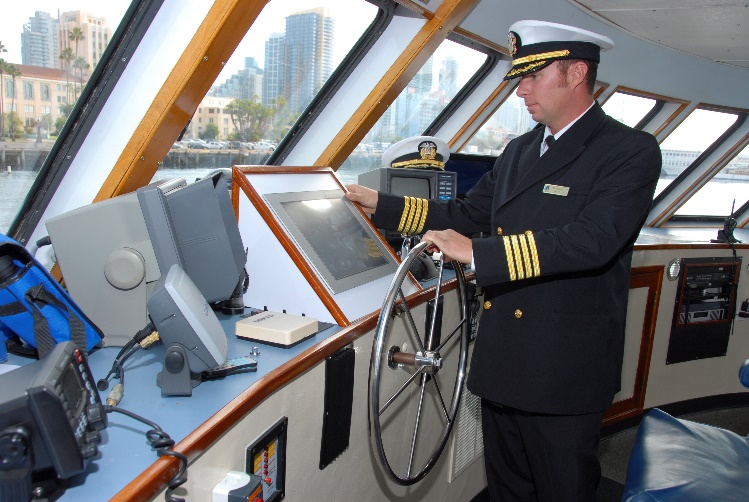 |
| Extra information Sailing in busy ports, like the Port of Hong Kong, requires effective communication. |
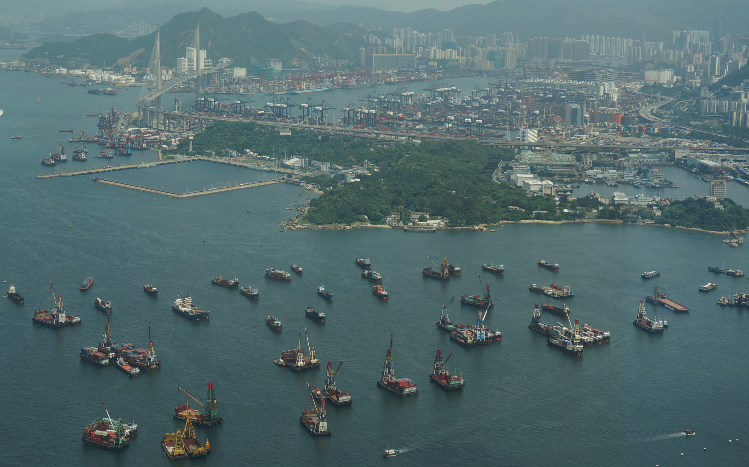 |
| Numbers and dates This professional exchange between naval officers took place on October 30, 2009. |
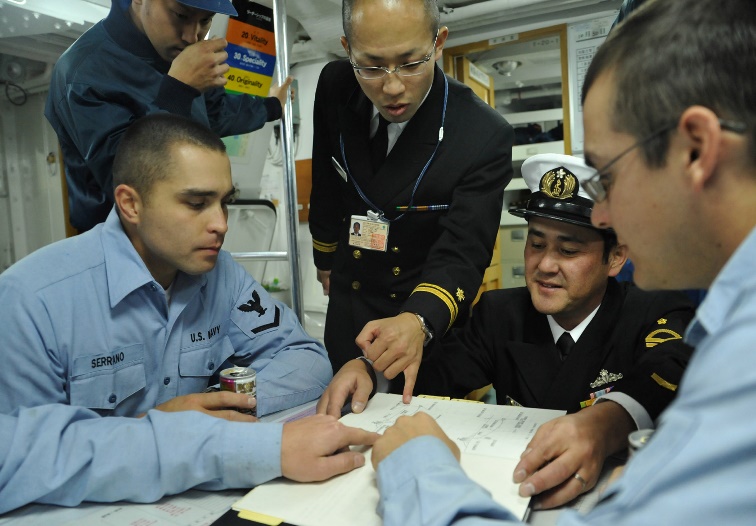 |
| Conditional sentences If the ship were to encounter heavy weather, the cargo should remain secure. |
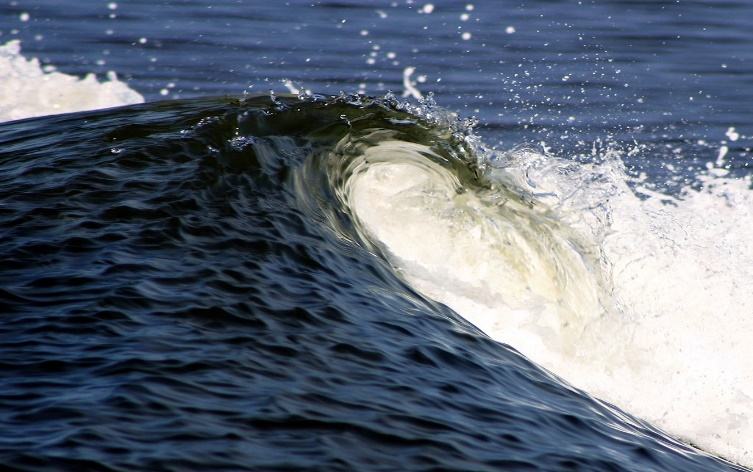 |
| Subordinating conjunctions and prepositional phrases at the beginning of a sentence While sailing off the coast of Somalia, MV Faina was hijacked by pirates. |
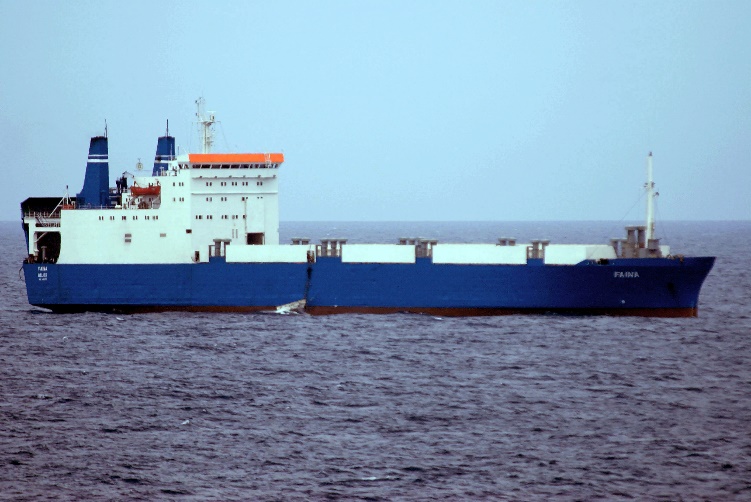 |
| Direct speech >«We need to perform a spot-check in the engine room, Tony.» |
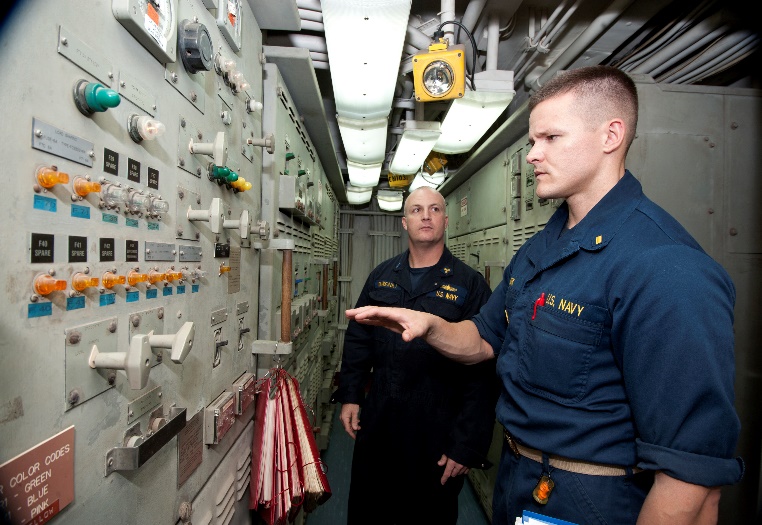 |
| Place names San Francisco, California is home to a large port facility. |
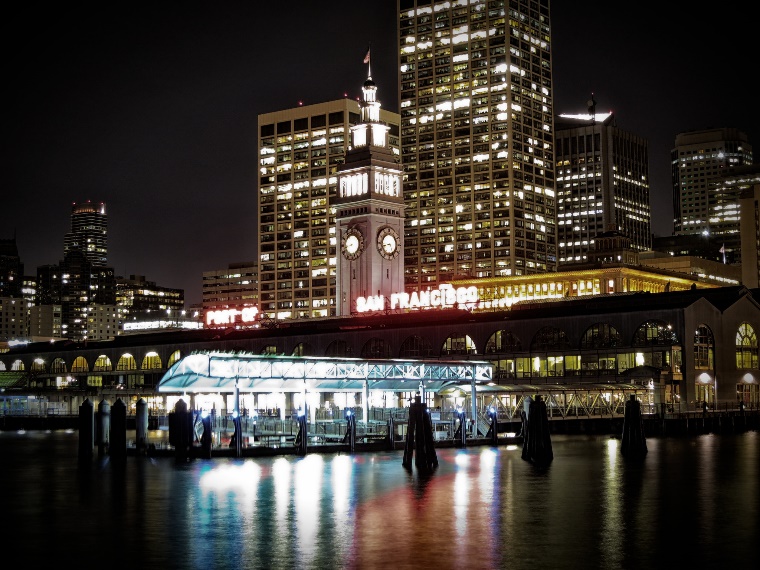 |
Lists
Commas are needed when making a list of more than two things or actions. Notice in the examples below that the commas are placed after each item in the list.
Examples
- The Captain, Bosun, and First mate attended the meeting.
- She excelled at running, swimming, and singing.
- The cargo was comprised of wine, fruit, and shrimp.
- He ran, biked, and climbed to prepare for his marathon.
The Oxford comma
The Oxford comma
There are different approaches to comma use when listing things in a sentence. Using a comma before the coordinating conjunction (i.e. and, or, but) as you see in the examples above is commonly known as the Oxford comma. Others refer to the comma as the serial comma or the Harvard comma, and its use and purpose are heavily debated. Consider the picture below- how does comma placement affect the reader's understanding of the sentence? Watch out this Ted-Ed video to find out more!
Image courtsey of The Gloss.
Coordinate adjectives
Commas can also be used to separate two adjectives describing the same noun (coordinate adjectives).
Examples
- The vessel Pacific Rim is a large, ancient tanker.
- Hong Kong is home to a gigantic, modernized port.
Extra information
A comma or commas should be used when you add extra non-essential information to a sentence.
Examples
- The Captain disliked sailing through the Strait of Malacca, a heavily trafficked fairway.
The phrase heavily trafficked fairway gives you additional information about the Strait of Malacca, but it is not essential in helping the reader understand the sentence.
- The trawler, prone to listing during high winds, almost capsized near the shoal.
*In this sentence,* prone to listing during high winds *gives you extra information about the trawler. As in the previous sentence, the meaning of the sentence can be understood without this phrase.*
- Illegally discharging waste overboard, which is strictly regulated by MARPOL, can result in serious consequences, such as fines or prison sentences.
*Read the sentence above without the information in bold. Does it still make sense? Commas allowed the writer to add extra information for the benefit of the reader.*
Numbers and dates
Another problematic area for non-native English speakers (and many native English speakers!), is writing numbers and dates.
Numbers
Commas are typically used when writing numbers greater than 1,000. The comma divides the numerical expression and helps the reader to determine if the number in question is in the thousands, millions, or billions.
Examples
- One thousand: 1,000
- One million: 1,000,000
- One billion: 1,000,000,000
If you are familiar with the Norwegian numerical system, you might notice that the use of commas in numerical expressions is the exact opposite of what is done in Norwegian. In Norwegian, numbers 1,000 or more are written with a decimal point and not a comma. When writing numerical expressions in English that include fractions or monetary expressions that include cents, a decimal point must be used. This is the opposite how these expressions are written in Norwegian, where a comma is used to express fractions and cents/change.
Examples
0.05
0.25
$50.04
£10.20
Dates
Writing dates in English is not as complicated as one might think. British English dates are written much the same as Norwegian dates, with the exception of the name of the month, which is written in English. The British English way of date writing does not include a comma. However, American English dates require a comma as they feature the month before the day and the year. Below is a table with examples of how dates are written in both American and British English. Note that this is how dates should be written out in texts. When writing the date on a cover page or in the date section of a report, abbreviations can be used, e.g. dd.mm.yyyy, mm.dd.yyyy, dd-mm-yyyy, mm-dd-yyyy, dd/mm/yyyy, mm/dd/yyyy.
Examples
| British English | American English |
|---|---|
| 21 March 1984 | March 21, 1984 |
| 21st March 1984 | March 21st, 1984 |
| the 21st of March, 1984 | the 21st of March, 1984 |
| Wednesday, 21 March 1984 | Wednesday, March the 21st, 1984 |
| Wednesday the 21st of March, 1984 | Wednesday, March 21, 1984 |
The st you see after the number 21 refers to the date being the twenty-first. If you choose to write the date using an ordinal indicator, e.g. 21st, you must use the appropriate suffix.
Examples
- 21st - first
- 22nd - second
- 23rd – third
- 24th – fourth
How you write a date is often a stylistic choice. Ask your instructor which style you should use before choosing either the American or British English method, and remember to be consistent after you have chosen one or the other.
Conditional sentences
"If I finish reading Chapter 5, I can go out for a beer." Maybe you have said something like this to yourself at some point during the school year. This sentence presents you with a condition- if you do one thing, then another thing can be done or happen. If you start a sentence with a conditional If clause, you must use a comma.
Examples
– If the engine is not repaired by tomorrow, we will be behind schedule.
– If there is an oil spill, the environment could be irreparably damaged.
These kinds of sentences do not require a comma if they do not start with the if clause.
We will be behind schedule if the engine is not repaired by tomorrow.
The environment could be irreparably damaged if there is an oil spill.
Subordinating conjunctions and prepositional phrases at the beginning of a sentence
If you are wondering what a subordinating conjunction is or does, look no further than this very sentence. The subordinating conjunction "if" was used in the above sentence to turn two sentences into one.
Example
You are wondering what a subordinating conjunction is or does.
+
Look no further than this very sentence.
=
If you are wondering what a subordinating conjunction is or does, look no further than this very sentence.
Using "if", these two sentences are joined together. Notice how the sentence using "if" has a better flow than the two sentences on their own. Subordinating conjunctions are a useful tool in advanced writing in English.
Why are these called subordinating conjunctions? In the example above, "if" is used to turn one sentence into a subordinate clause. This in turn emphasizes the importance of the second sentence. Whenever you use a subordinating conjunction, you not only connecting ideas, but emphasizing them. Read in chapter x to find out about coordinating conjunctions which are used to connect to similar and equal ideas.
Look at the table below. These are examples of some of the most common subordinating conjunctions, many of which you have probably seen and heard before.
| Subordinating conjunction | Example |
|---|---|
| After | He eats dinner after he gets home from work. |
| Although | Although she is never sick, she often misses work. |
| As (as soon as, as long as) | I will call you as soon as I am home. |
| Because | The First Officer panicked because the Captain had fallen asleep. |
| Before | Clean your workstation before you leave. |
| During | During class, you cannot use your phone. |
| Even though | Even though you have a lot of experience, you can always learn new things. |
| If | If you miss work, you might be fired. |
| In order to | She must speak English in order to become an officer. |
| Since | Since the marine environment is vulnerable, we must prevent pollution. |
| Though | He has many friends though he is often homesick. |
| Unless | The expected date of arrival is tomorrow unless we encounter bad weather. |
| Until | Until an alternative is discovered, diesel fuel must still be used. |
| When | When working at heights, proper personal equipment is necessary. |
| Whenever | The crew is always excited whenever they reach a new port. |
| Wherever | Wherever you go, there you are. |
| While | While you are in class, it is important to concentrate. |
Look at the example sentences above. Some sentences have a comma and others do not. Are you able to recognize a pattern? Two "rules" should be apparent from the above examples:
- Sentences starting with a coordinating conjunction always use a comma at the end of the subordinate clause.
- Commas are never used before a subordinating conjunction if it appears in the middle of a sentence.
Some of the subordinating conjunctions above are also prepositions (before, after, until). When you start a sentence with a prepositional phrase, a comma is necessary. If you are unsure about the difference between a prepositional phrase and a subordinate clause, just remember that clauses have a subject and verb, and phrases do not. Another important thing to remember is that subordinating conjunctions join sentences together, and prepositions indicate a relationship between words and ideas in a sentence.
Direct speech
Commas are also used when indicating direct speech. This most often appears in literary texts when the author writes out dialogue. Reports that feature conversations might also write out direct speech. Direct speech and dialogue indicate that someone is being addressed or spoken to in the sentence.
Examples
- "Play it again, Sam."
- "We quit at noon on Fridays, right?"
- "I have had enough, Truls."
- "Loading completed, Captain."
The above examples also use quotation marks ("). These are also necessary when indicating direct speech or dialogues in formal texts.
Look at the image below. Which statement is direct speech and which is not? How does the comma change the meaning of the sentence?

Image courtesy of Videoplasty.com
If you said that "Let's eat, Billy" is an example of direct speech, you are correct. "Billy" is being told that it is time to eat by the speaker/writer, but without the comma you leave Billy wondering if he is about to be grilled or fried.
Place names
Commas are also an important part of writing certain place names. Knowing when to include commas when writing place names will be necessary when writing reports. Commas are necessary when separating city names and states or regions as well as city names and countries.
Examples
- The ship sank off the coast of Galveston, Texas.
- The company operates out of Kristiansund, Norway.
- The fishing vessel Mako departed San Remo, Victoria.
Exercise
Read the following report and correctly place commas where necessary.
At 2000 on 12 August 2017 the fishing vessel Mako departed San Remo Victoria bound for fishing grounds about 3 hours away. Once clear of Cape Woolamai Mako maintained a steady course (210°) and speed to the south-west. At the same time the container ship Glasgow Express was passing Cape Liptrap heading north-west. The ship was bound for Melbourne Victoria and was maintaining a steady course (299°) and speed. From about 2030 the vessels were on a collision course.
No avoiding action was taken by either vessel and at about 2246 they collided.
The ATSB (Australian Transport Safety Bureau) found that a proper lookout by ‘all available means’ was not being maintained on either vessel.
Glasgow Express’s bridge team saw and monitored Mako visually from about 2200. However a full appraisal of the situation using other instruments or means available on the bridge (such as radar) was not done. As a consequence the situation was misinterpreted and the risk of collision was not identified. Therefore no avoiding action was taken.
Prior to handing over the watch at 2230 Mako’s watchkeeper identified Glasgow Express by radar and visually. However the information was misinterpreted and it was concluded that the Glasgow Express was passing clear ahead of the fishing boat and no avoiding action was taken. Then after taking the watch Mako’s second watchkeeper did not see the Glasgow Express until moments before the collision.
In addition Mako was under way with all external lights on. This made the vessel more easily seen but reduced the ability for Glasgow Express’s bridge team to accurately visually appraise the situation. The bright lights also reduced Mako’s watchkeeper’s night vision and ability to distinguish features beyond the glare of the lights.
The ATSB also noted that Mako similar to other fishing vessels of this design had a large fishing net winch drum mounted on deck forward of the wheelhouse. This winch drum restricts forward vision and may limit the ability to maintain a proper lookout unless accounted for in on-board procedures and training.Edited.
Source: https://www.atsb.gov.au/publications/investigation_reports/2017/mair/333-mo-2017-007/
Bibliography
- Australian Maritime Safety Authority. (2013). Australian Global Maritime Distress and Safety (GMDSS) Handbook.
- Bhattacharjee, S. (2017, 06 16). What are the primary duties of an OOW. Retrieved from marineinsight.com: http://www.marineinsight.com/marine-navigation/what-are-the-primary-duties-of-officer-on-watch-oow-on-ships-bridge/
- Bhattacharjee, S. (2017, 09 28). What is Electronic Chart Display and Information System (ECDIS)? Retrieved from Marine Insight: https://www.marineinsight.com/marine-navigation/what-is-electronic-chart-display-and-information-system-ecdis/
- Blakey, T. N. (1995). English for maritime studies.
- Chopra, K. (2017, 05 16). 30 types of-navigational equipment and resources used onboard modern ships. Retrieved from marineinsight.com: http://www.marineinsight.com/marine-navigation/30-types-of-navigational-equipment-and-resources-used-onboard-modern-ships/
- Chopra, K. (2017, October 7). Entries To Be Made in Ship's Engine Room Logbook. Retrieved from Marine Insight: https://www.marineinsight.com/guidelines/different-entries-to-be-made-in-ships-engine-room-log-book/
- Ford, M. C. (2012, February). A Master's Guide to Using Fuel On Board Ships. Retrieved from The Standard P&I Club: https://www.standard-club.com/media/24163/AMastersGuidetoUsingFuelOilOnboardships.pdf
- IMO. (2014). ISM CODE . London: International Maritime Organization.
- International Chamber of Shipping. (2016). Bridge Procedures Guide. London: Marisec Publications.
- Kluijven, P. v. (2003). The International Maritime Language Programme. Alkmaar: Alk & Heijen Publishers.
- Kluijven, P. v. (2003). The International Maritime Language Programme. Alkmaar: Alk & Heijen Publishers.
- Maritime and Coastguard Agency, in the United Kingdom. (2017). Retrieved from mcga.gov.uk: https://mcanet.mcga.gov.uk/public/c4/solas/solas_v/Annexes/Annex06.htm#mca
- Martinez, I. (2019). Marine Propulsion. Retrieved from Isidoro Martinez: http://webserver.dmt.upm.es/~isidoro/bk3/c17/Marine%20propulsion.pdf
- Mossey, B. (n.d.). Regular maintenance of marine diesel engines. Retrieved from MTU Detroit Diesel: https://www.mtu-online.com/fileadmin/fm-dam/mtu-usa/mtuinnorthamerica/white-papers/WhitePaper_PrevMaintenance_Marine.pdf
- Norwegian Maritime Authority . (2012, 02 28). Retrieved from https://www.sdir.no/en/shipping/accidents-and-safety/reporting-of-marine-casualties-and-occupational-injuries/
- Norwegian Maritime Authority . (2014). Regulations of 5 September 2014 No. 1157 on navigation and navigational aids for ships and mobile offshore units. Oslo: Regjeringen.
- Norwegian Maritime Authority . (2018, 01 15). Retrieved from https://www.sdir.no/en/guides/guidance-note---notification-and-reporting-of-marine-casualties-and-incidents/
- Norwegian Maritime Authority. (2017, September 09). Log books. Retrieved from Sjøfartsdirektoratet: https://www.sdir.no/contentassets/676035cb7c304b06ab569126d7ee7c21/15-september-1992-no.-693-form-and-keeping-of-log-books.pdf?t=1558686813469
- NYK LINE Safety & Environmental Management Group. (2008). Case Studies: Ship Engine Trouble. Tokyo: Seizando.
- Precision Products UK. (2019, January 14). Common Problems with Marine Engines. Retrieved from Precision Products UK: https://www.ppuk.com/common-problems-with-marine-engines/
- Pritchard, B. (n.d.). Meating heavy weather. Rijeka, Croatioa.
- Seagull AS. (2011, 03). Techical English for Deck Cadets.
- Sjøfartsdirektoratet. (1999). Maritime Standarduttrykk. Oslo: Universitetsforlaget.
- Stone, R. (1992). Introduction to Internal Combustion Engines. London: The Macmillan Press LTD.
- van Dokkum, K. (2013). Ship Knowledge. Enkhuizen: DOKMAR Maritime Publishers BV.
- Vanner, A. (2017). SS Archimedes- Arrival of the Screw Propeller, 1839. Retrieved from The Dawlish Chronicles: https://dawlishchronicles.com/2018/09/04/ss-archimedes-arrival-of-the-screw-propeller-1839/
- Wankhede, A. (2019, March 10). 8 Common Problems Found In Ship's 2-Stroke Marine Engines. Retrieved from Marine Insight: https://www.marineinsight.com/main-engine/8-common-problems-2-stroke-marine-engines/
- Watch System. (2017, 08 05). Retrieved from Wikipedia: https://en.wikipedia.org/wiki/Watch_system#Traditional_system
- Wikipedia. (2017, 06 29). wiki/Seafarer\'s professions and ranks. Retrieved from Wikipedia: https://en.wikipedia.org/wiki/Seafarer%27s_professions_and_ranks#
- Wingren, J. (2016, January 12). Pros and cons with different marine propeller solutions. Retrieved from Volvo Penta: http://nordicblog.volvopenta.com/pros-cons-different-marine-propeller-solutions/
- Woodford, C. (2018, June 29). Diesel Engines. Retrieved from Explain that Stuff!: https://www.explainthatstuff.com/diesel-engines.html
- Wärtsliä. (2019). Wärtsliä Encyclopedia of Marine Technology. Retrieved from https://www.wartsila.com/encyclopedia/


